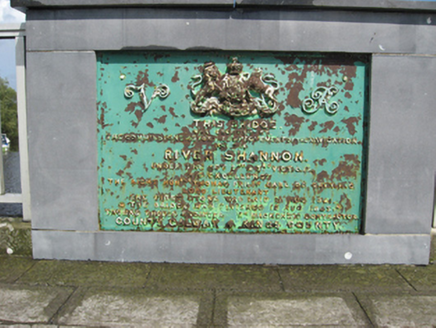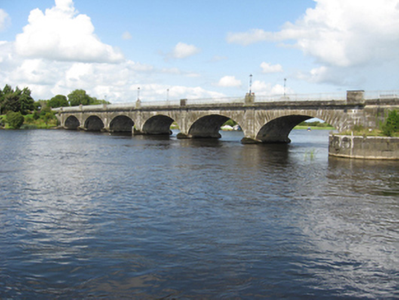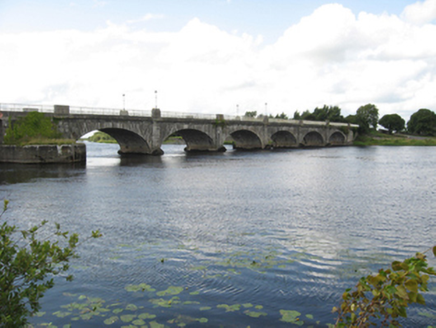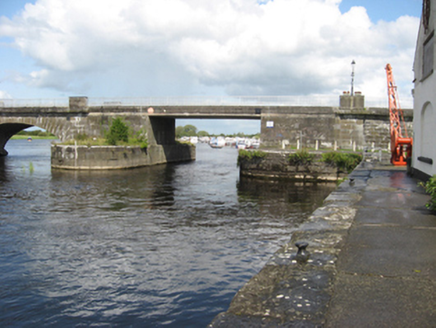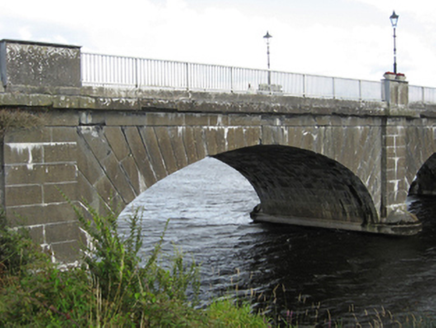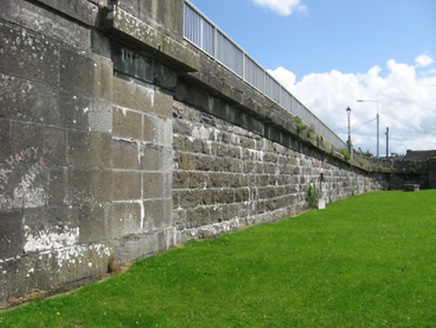Survey Data
Reg No
30410909
Rating
National
Categories of Special Interest
Architectural, Historical, Technical
Original Use
Bridge
In Use As
Bridge
Date
1840 - 1845
Coordinates
200530, 215863
Date Recorded
05/08/2009
Date Updated
--/--/--
Description
Six-arch limestone road bridge over River Shannon, dated 1843, with square-headed reinforced concrete navigation span of 1971 at south end, latter span replacing cast-iron swivel bridge. Present bridge replaced structure of c.1690 and that in turn had replaced seventeen-arch late medieval bridge. Rock-faced rusticated approach walls, regularly laid dressed limestone blocks to bridge proper with projecting pilasters between arches, and cut-stone string course. Semi-elliptical arches with channelled rusticated voussoirs and ashlar soffits. Cut limestone abutments. Late twentieth-century parapet with dressed limestone piers having modern electric lamp standards and mild steel railings. Date plaques to eastern parapet piers. Dressed limestone U-plan platform at south end of west side. Cast-iron plaque to parapet commemorates construction of bridge.
Appraisal
Banagher was one of the ancient crossing points on the river Shannon. Designed by Thomas Rhodes of the Shannon Commissioners, this masonry bridge with its strong architectural design, was constructed between 1841 and 1843 to replace an earlier structure. Of similar length to the 1750s bridge at Shannonbridge to which it is often compared, but it achives the crossing with six arches as opposed to sixteen at Shannonbridge. A combination of rock-faced, dressed and ashlar limestone have been used in its construction, a reminder of the skills of nineteenth-century stonemasons. The navigation span on the east side of the bridge, which replaced an earlier cast-iron swivel bridge, forms part of the inland waterways heritage of the River Shannon. The Martello tower, and the late medieval fortification called Cromwell's Castle, emphasise the strategic importance of the crossing point through the centuries.
